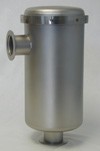Pneumatic systems are widely used in today's environment. For designers and engineers, this means that being able to design with pneumatics in mind is critical.

An example: to meet the demand for environmentally friendly fuel systems on automobiles, a fuel vapor management system was created. These systems are simply low-pressure pneumatic systems. In addition, automobile air suspension systems and the rapid development of robotic applications have accelerated the need for analysis of pneumatic systems. The dynamic analysis of pneumatic systems is especially difficult due to the highly compressible characteristics of the medium. HyPneu pneumatic systems analysis software easily handles these complexities so that all the user needs to do is to place a pneumatic icon in the system and tell HyPneu to "run.”

HyPneu empowers the designer to create schematics using its Schematic Editor, take advantage of unequaled simulation capabilities, and set up a customized component database. All of this, plus access to our unparalleled technical support services is included when you invest in HyPneu.
Pneumatic:
වාතරෝධක, වායව, හුළං පුරවනලද
වාතරෝධක, වායව, හුළං පුරවනලද











